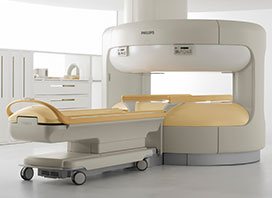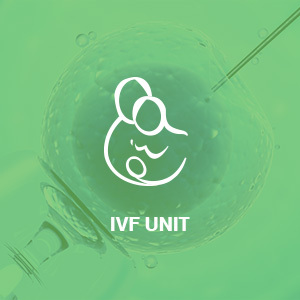ULTRASOUND – FETAL MEDICINE DEPARTMENT

The REA Ultrasound and Fetal Medicine Department perform all the ultrasound examinations that are necessary throughout pregnancy. With ultrasound, we can monitor the development of the fetus from the first days to the end of your pregnancy. Staffed with experienced medical and nursing personnel and equipped with state-of-the-art technology, our department can provide all necessary means for full control of your pregnancy.
Ultrasound It is the use of ultrasound waves, which cannot be heard or felt, that provide an image of the fetus and placenta. It is particularly important to know that ultrasound is harmless to you and your baby and may be repeated as frequently as advised by your doctor. Ultrasound is a very valuable diagnostic tool during pregnancy. At the beginning of pregnancy, it is used to determine the term of pregnancy and the number of fetuses and viability.
Later it is used to evaluate fetus growth, location of the placenta, the quantity of amniotic fluid and any anatomical abnormalities of the fetus. Ultrasound is also used to support intervention methods such as amniocentesis and chorionic villus sampling (CVS). With ultrasound, we are able to diagnose 70% of serious abnormalities and 40% of light abnormalities with which a child may be born.
Pregnancy ultrasounds It is necessary to have the following ultrasounds during the 9 months of embryo growth:
- First trimester's ultrasound (weeks 6-11)
- Nuchal translucency ultrasound (weeks 11-13)
- Level-b ultrasound (weeks 20-24)
- Growth ultrasound - Pregnancy Doppler scan (weeks 28-32)
NUCHAL TRANSLUCENCY ULTRASOUND (at 11-13 weeks of pregnancy)
This ultrasound is performed from 11th to 13th week plus six days.This is usually an abdominal examination, but in case a transvaginal examination may be necessary. The ultrasound is performed in order to:
- Calculate the fetal age with an accurate measurement of the fetus length.
- Diagnose multiple pregnancies. In this case, it is also determined whether the two fetuses share the same placenta, which may result in problems during pregnancy. In such cases, pregnancy is more regularly observed.
- Diagnose an early pregnancy failure (missed abortion). Unfortunately, in 2% of women who attend for a nuchal scan it is found that the fetus has died, often several weeks before and without any warning. Couples will receive full counseling as to the possible causes of this problem and the options for subsequent measures that may be necessary.
- Diagnose certain serious congenital abnormalities. Unfortunately, serious abnormalities will be revealed for 1% of examined fetuses; such abnormalities may result in severe disabilities, but in some cases, they may be fixed with appropriate surgeries right after birth.
- Assess the risks of Down’s syndrome and other chromosomal abnormalities. All women, whatever their age, may carry a fetus with chromosomal abnormalities like Down’s syndrome. Age is a rather important factor for above risks.
Today, it is possible to provide every mother with an estimate of her individual risk for this particular pregnancy. This is calculated by taking into account the age of the mother, measurement of two hormones in the mother’s blood and assessing the following ultrasound findings:
- Nuchal translucency (amount of fluid behind the neck of the fetus)
- Presence or absence of fetal nasal bone
- Blood flow through the tricuspid valve of the fetal heart and ductus venosus
- Presence or absence of any fetal physical abnormalities
With above analytical examinations, 5% of pregnancies may be characterized as “high-risk chromosomal abnormalities” and further tests may be required, while the majority of fetuses at a rate of 95% will be characterized as “normal”.
However, parents need to understand that the only way to be absolutely sure whether or not the fetus has a chromosomal abnormality is by having an invasive test such as chorionic villus sampling (CVS) or amniocentesis (amnio). They also need to take into consideration that these tests carry a risk of a miscarriage of about 1%.
With all above information provided by our Hospital, it is up to the parents of the fetus to decide whether or not the risk of the fetus having a chromosomal abnormality is high enough to warrant having an invasive test.
LEVEL 2 ULTRASOUND (detailed ultrasound at 20-24 weeks of pregnancy)
During this ultrasound scan, we examine in detail the fetal anatomy, determine the position of the placenta, assess the amount of amniotic fluid, measure fetal growth and detect any indexes related to chromosomal abnormalities. In women at high risk for preterm delivery (multiple pregnancies, previous preterm birth, abnormalities of the uterus or previous cervical surgery), if the observing obstetrician considers it necessary, a transvaginal scan to measure the length of the cervix is carried out.
Moreover, in this scan, the uterine artery blood flow is estimated in order to detect any pregnancies with high risks of intrauterine growth restriction or preeclampsia. Concerning the findings of fetal abnormalities in this scan, it has to be clarified and parents need to understand that not all congenital abnormalities of the fetus may be detected.Therefore, a level II ultrasound scan without obvious pathological findings greatly reduces the risk of abnormalities but it does not completely eliminate it. Below you can find a list of various congenital abnormalities and the relevant possibilities of an ante-natal diagnosis according to the Royal College of Obstetricians and Gynecologists (RCOG) in UK.
Apart from the above mentioned, we need to know that a fetus is a dynamically growing organism and may present various abnormalities after the level II ultrasound scan until its birth or even after its birth and during the first years of its life.
Moreover, this scan can usually tell the fetus sex, but not always. If the scan predicts the sex of the fetus, this is right about 95% of the time. The scan operator will inform you about the sex of the baby, in case you and your partner wish to know that information. Finally, if the scan finds an abnormality, parents are informed by the doctor conducting the examination and a further scan may be required or other types of imaging examination (MRI) or consulting by other physicians (pediatric cardiologist, pediatric neurologist, pediatric surgeon, pediatric urologist or geneticist).
GROWTH ULTRASOUND - PREGNANCY DOPPLER SCAN (at 28 - 32 weeks of pregnancy)
This ultrasound scan is usually carried out at 28 to 32 weeks of pregnancy. Some obstetricians advise this scan to be performed to all women, while others reserve such scans for those women who have had previous complications in their current or previous pregnancies. Pregnancy complications that need to be examined are preeclampsia, pregnancy hypertension, diabetes, growth restriction, stillbirth (in a previous pregnancy). This scan aims to determine fetal growth and at the same time assess blood flow to the uterus, placenta and the fetus itself.
It includes:
- Measurement of the size of the fetus, of its head, abdomen and thigh bone and a final estimate of fetal weight
- Measurement of the amount of amniotic fluid, i.e. the fluid around the fetus
- Evaluation of the placental position and appearance
- Examination of the fetus’ movements
Color Doppler ultrasound scan assesses blood flow in:
- Uterine arteries
- Umbilical artery
- Middle cerebral artery
- Ductus venosus
AMNIOCENTESIS
How is amniocentesis performed?
Amniocentesis is an invasive prenatal diagnostic procedure that involves passing a fine needle into the uterus in order to remove a small volume of the amniotic fluid surrounding the fetus. This fluid is fetal urine and the amount taken is restored within a few days. The amniotic fluid contains fetal cells, the chromosomes of which are examined.
When is amniocentesis performed?
Amniocentesis provides the same information with the chorionic villus sampling and is considered safe to be performed after 16 weeks of pregnancy.
When should you expect to get the test results?
The first results are usually available within 2-3 working days and final results are available within 2-3 weeks. As soon as the results are available, we inform your obstetrician or personally you.
Is it possible that the screening will have to be repeated?
In 0.1% of the cases, this invasive test may have to be repeated. This may happen due to an unsuccessful culture of placental cells in the laboratory or due to unsafe final results.
Is there a miscarriage risk due to the above test?
The risk of miscarriage due to this invasive test is about 0.5-1%, same to the risk of chorionic villus sampling. The majority of women that will undergo an amniocentesis will get normal results, their pregnancy will continue without problems and they will give birth to a normal baby. However, it has to be clarified that normal results do not rule out the possibility for other abnormalities to occur and in certain cases (as for example, in fetuses with an increased nuchal translucency) you may be asked to perform further ultrasound scans.
CHORIONIC VILLUS SAMPLING (CHORIONIC VILLI) - CVS
Chorionic villus sampling (CVS) involves the examination of chorionic villi (placental tissue). Both the fetus and placenta originate from the same cell; therefore, placenta cell chromosomes can be used for the fetal chromosome test.
How is CVS performed?
A local anesthetic is used and a fine needle is pushed through the uterus to remove a small sample of chorionic villi. The needle is constantly observed on ultrasound, in order to avoid any injury to the fetus. The procedure lasts 2-3 minutes and then the operation of the fetus’ heart is checked.
When is CVS performed?
CVS is considered safe to be performed after 11 weeks of pregnancy.
What are the symptoms of the mother after the test?
For the next 1-2 days, the mother may experience a mild vaginal period-like pain or a slight vaginal bleeding. These are relatively common symptoms and in most cases, the pregnancy continues without any problems. If required, you may take simple painkillers, like paracetamol (Depon, Apotel). If the pain is intense or you experience severe bleeding or fever, please immediately contact your obstetrician or the maternity clinic.
When should you expect to get the test results?
The first results are usually available within 2-3 working days and final results are available within 2-3 weeks. As soon as the results are available, we inform your obstetrician or personally you.
Is it possible that the screening will have to be repeated?
In 0.1% of the cases, this invasive test may have to be repeated. This may happen due to an unsuccessful culture of placental cells in the laboratory or due to unsafe final results.
Is there a miscarriage risk due to the above test?
The risk of miscarriage due to this invasive test is about 1%, approximately the same with the risk of amniocentesis.


















